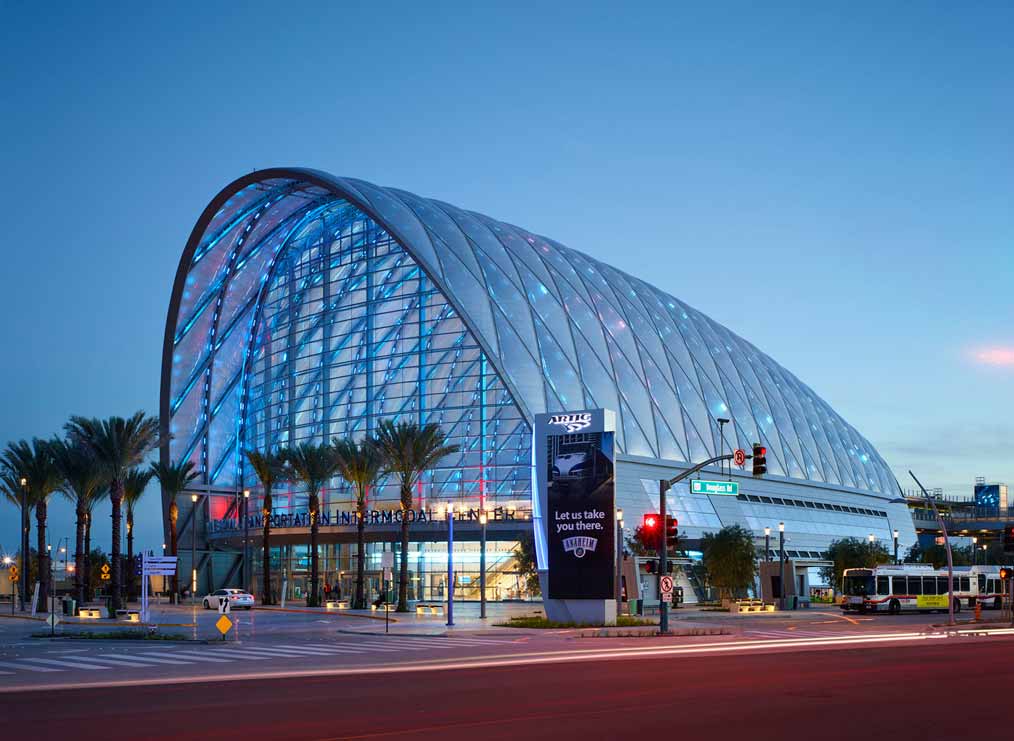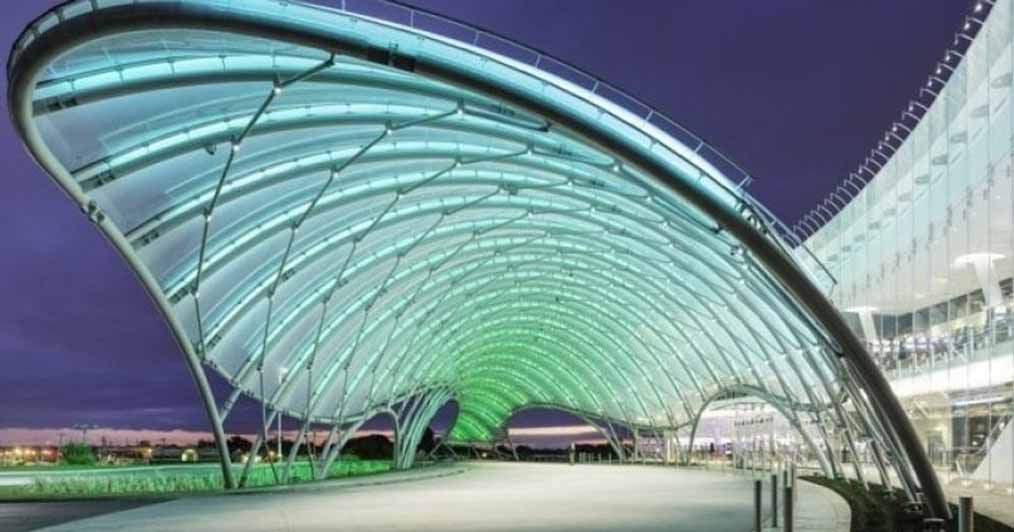
The true functionality of plastic polymers was not quite realised until recently, this article by Surfaces Reporter(SR) explores more about ETFE. Earlier plastic polymers were seen as auxiliary building materials that could only be used for wipe-clean kitchen surfaces. With more research and innovations polymers are finally getting the attention they deserve. Many architects are now using ETFE (Ethylene tetrafluoroethylene) for constructing buildings from top to bottom. ETFE or Ethylene Tetrafluoroethylene is a translucent polymer sheet. The material composes mainly of fluorite combined with trichloromethane and hydrogen sulfate. A mixture of fluorite with trichloromethane and hydrogen sulfate is combined by pyrolysis to produce chlorotrifluoroethylene. Lastly, chlorotrifluoroethylene is combined with ethylene to produce ETFE.
ETFE is installed within a metal framework. Its properties allow the feasibility of adding the light source on either side. Some other advantages that have made the polymer popular include its transmit ability. As compared to glass, ETFE transmits more light, insulates better, and the best feature is that it costs 24 to 70 per cent less to install. The material is lightweight, only 1/100 of the weight of glass. It is easier to work with since it is more flexible and lightweight.
How did ETFE come into the picture?
The history of this flexible material dates back to the 1970s. It was developed by DuPont to serve in the aerospace industry to serve as a lightweight, heat resistant alternative.ETFE films have been used in agriculture as well as in architecture. Notable use in architectural projects includes coverings for greenhouses and protection for solar cells. The first large scale application was in 2001 to encapsulate the Eden Project in Cornwall, UK. The chief engineering firm Arup was in favour of ETFE because of its ability to regulate environmental conditions. It was known to them that the film of the material can be printed with specific patterns and layered to control solar conditions. These conditions were primarily required to protect the in-house climate-specific flora. The firm also realised the low friction coefficient of the material prevents dust or dirt from sticking to its surface. This property translates into a lower requirement for maintenance. It was not until 2008 that the material got the attention that it deserved. The usage of ETFE on the facade of PTW Architects' Water Cube for the 2008 Beijing Olympics was the turning part in the acceptability of this material in architecture. After that, the material was noticed as a construction material and a medium for dynamic illumination. Another remarkable depiction was in on the 120-foot telescopic shell of The Shed in New York City. A masterpiece by Diller Scofidio and Renfro and Rockwell Group.

Sustainable architecture with ETFE
With the rising climate change and the emphasis on sustainable architectural practices, ETFE could lead the way in numerous ways.ETFE has a self-cleaning nature and does not require frequent maintenance. It surpasses degradation from UV light, sunlight, weather and pollution. The sheets do not require tedious processes on changing even on wear and tear. The entire panel need not be disturbed to change just one sheet contrary to glass. ETFE sheets are also one hundred per cent recyclable. All of them are being recycled into new products and sheets. The production of ETFE is a water-based product and requires no solvent use. Hence the production of the polymer requires less energy. Wielding these sheets into larger ones does not require much energy too. The best part of this material is that its lower weight results in lower C02 emissions. And it is said that the carbon footprint of ETFE is about 80 times lower than that of similar systems.

Conclusion-The manmade polymer ETFE offers several advantages such as self-cleaning, high durability, higher insulation etc. To add to all of these, the polymer is even safer for the environment making it just the ideal choice for construction material.